We’ve always operated about 20 sucklers here in Maghera, Co Cavan.
I’m 36 now and since I was 12 or 13 I always thought, we have land here, it mightn’t be a whole pile, but there’s bound to be something we can do here to make money?
There was never going to be an opportunity to stay at home and work full-time with sucklers, in my experience anyway.
I would have looked at different things. I looked briefly at forestry. I looked at fruit and vegetables. You were talking a lot of land. The income wouldn’t have been that attractive to me.
In about 2012 or 2013, snail farming started to hit the papers. I gradually started to hear more and more about it, but I never took it that seriously. For the amount you put in and what you get out, it just seemed too good to be true. I didn’t pass too many remarks on it for a couple of years, but still kept in touch with it.
In 2015, I spent a bit of time doing research on snail farming throughout Europe and in Ireland. Teagasc had done some research on it as well.
In 2016, I basically decided to open up the business, Inis Escargot, and start snail farming. The thing that attracted me to it most was the small amount of land you needed for something that was going to keep you in a full-time wage and keep you at home too alongside the sucklers as well.
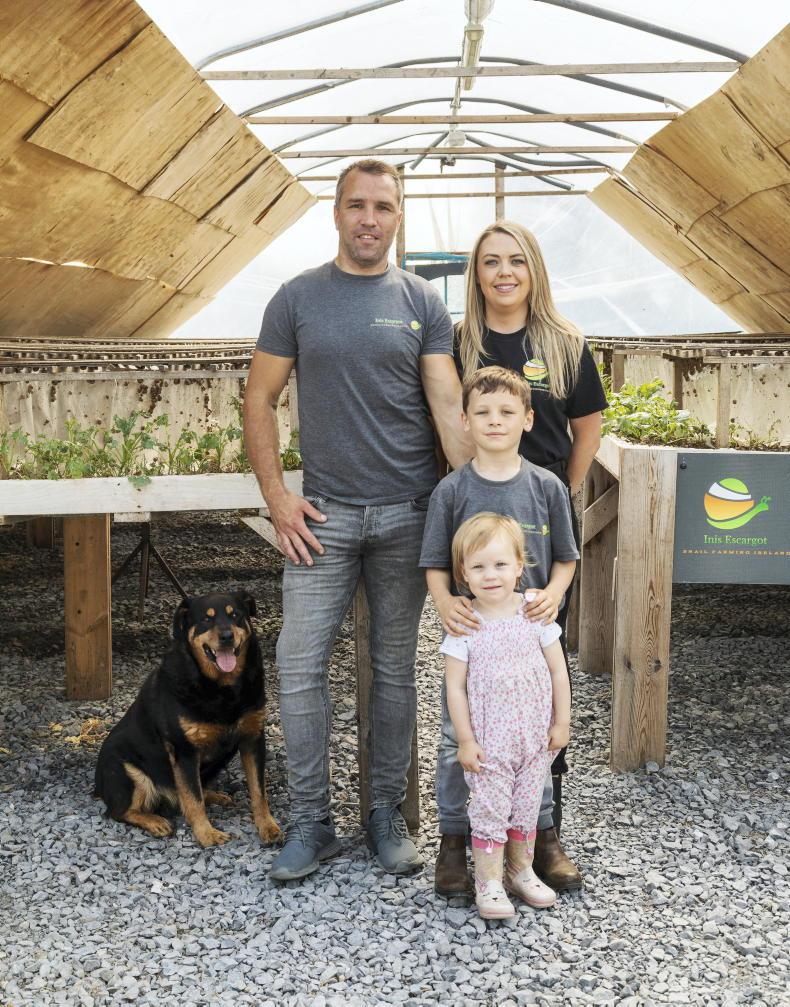
Peter Monaghan and his Family pictured for ICL July 2022. photographed on their snail and suckler farm in Cavan. Inis Escargot \ Claire Nash
I was in transport for years and years. For my first two or three years in snails I did them part-time alongside transport. After my second harvest then, we created a new business plan and said, ‘Right, what do we need to do to stay at home here full-time?’
I had been farming snails on half an acre, so we needed to expand the farm to the full acre. I was going to have a full-time wage from that. So, in 2019 I went full-time at it.
Starting off
Having done my research, I knew the market was huge. I knew that wasn’t going to be a problem. To start I bought in my infrastructure. The first thing I did was put an 80ft polytunnel up. That would be for rearing the snails.
You rear them probably for about four weeks in the polytunnel on forage rape and a high calcium feed, on rearing tables. Then they go out to the field in May or June until September.
They stay in the field then until it starts getting cold and you can start harvesting around the middle to the end of September. Depending on how much help you have, it will probably take you a few weeks to harvest them.
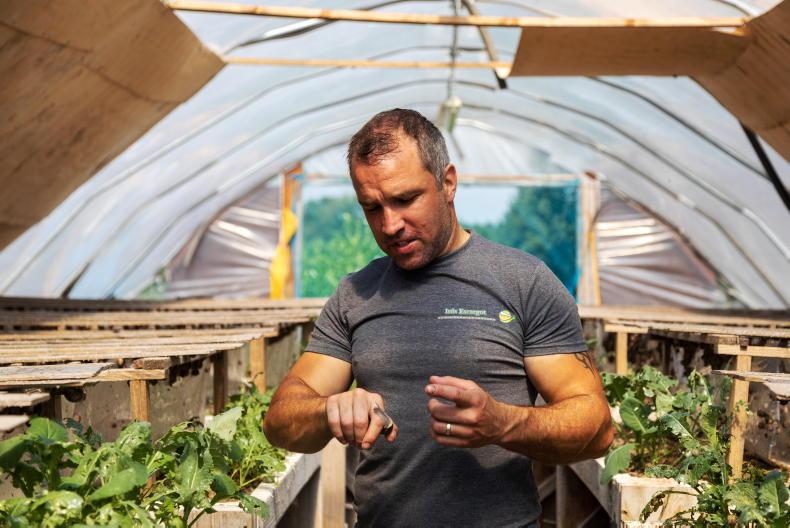
Peter Monaghan and his Family pictured for ICL July 2022. photographed on their snail and suckler farm in Cavan. Inis Escargot \ Claire Nash
At our farm here, in December we start breeding. We keep over anything from 300kg-600kg. 600kg of snails would probably produce, 750 million snails. We try to keep 1.5-1.6 million for ourselves. The rest we would sell to start-off farmers.
You’d be hoping to get about 10 tonne back off the acre. It’s quite a lot and to be honest it’s improving here every year. We breed the Helix Aspersa Müller. It’s the typical brown Irish garden snail
Driving on
There’s nowhere processing snails in Ireland, it breaks my heart, but there’s not. They’re all exported to Europe and processed. Some of them then come back to us in jars to sell. Other farmers just sell them all wholesale.
At the moment we’re getting a very good price, about €4.50/kg for our snails. I’ve never seen any worse than €4/kg. I know from my experience in cattle, you could never be guaranteed that at the end of every year.
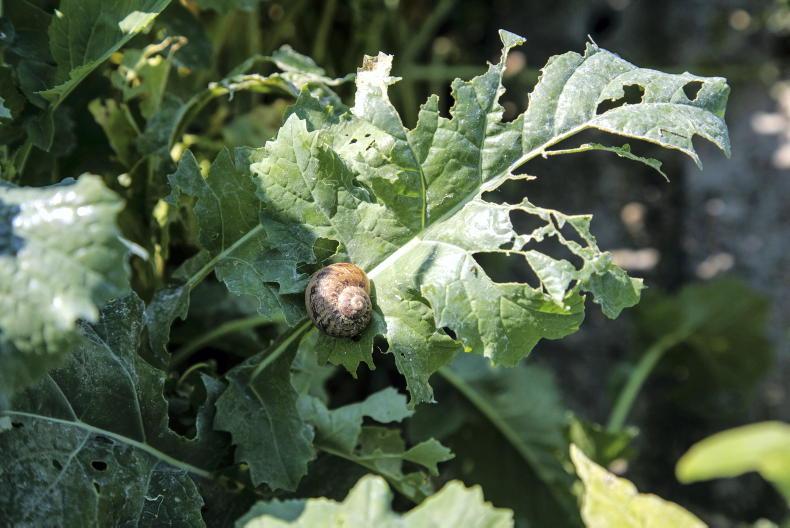
Peter Monaghan and his Family pictured for ICL July 2022. photographed on their snail and suckler farm in Cavan. Inis Escargot \ Claire Nash
To be honest, I love the cows. I produce lovely calves here. It’s great having the sucklers, but I honestly feel like there’s more work having the sucklers.
If you take the hours a suckler farmer would put in and the hours a snail farmer would put in; the hours that the snail farmer puts in, he’s getting paid for every one of them. That’s not the case with suckler farming, in my experience.
We fetched average prices of €5.75/kg last year for five and six month old weanlings.
We’re getting good prices, but when you look back at what you’re paying for silage, fertiliser, contractors and stuff like that, it’s going to be hard to get that back.
With the snail farming, the only bill I have every year is a very small electricity bill and the guaranteed bill is the feed then.
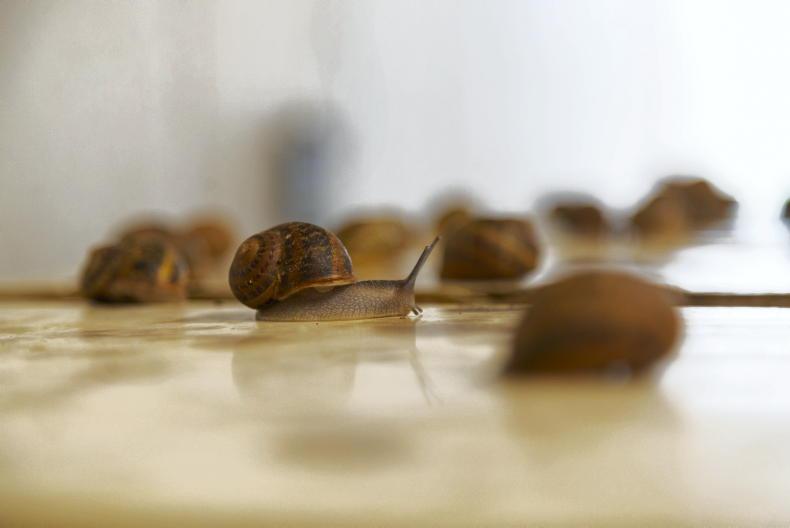
Peter Monaghan and his Family pictured for ICL July 2022. photographed on their snail and suckler farm in Cavan. Inis Escargot \ Claire Nash
I don’t think I’d ever be without the sucklers, but if push came to shove, as regards financially, I’d definitely be choosing the snails. I’m getting a full-time income from them and I can see a huge future with them.
What we’re doing here is we’re actually specialising in a few other things like training start-up snail farmers.
There are loads of other opportunities in snails too. You have snail caviar, snail slime, liver pâté, the shells. We’re actually concentrating now on the caviar and the snail slime.
Read more
My Country Living: ‘They’re fascinating creatures’
From Czestochowa city to the Carlow countryside
We’ve always operated about 20 sucklers here in Maghera, Co Cavan.
I’m 36 now and since I was 12 or 13 I always thought, we have land here, it mightn’t be a whole pile, but there’s bound to be something we can do here to make money?
There was never going to be an opportunity to stay at home and work full-time with sucklers, in my experience anyway.
I would have looked at different things. I looked briefly at forestry. I looked at fruit and vegetables. You were talking a lot of land. The income wouldn’t have been that attractive to me.
In about 2012 or 2013, snail farming started to hit the papers. I gradually started to hear more and more about it, but I never took it that seriously. For the amount you put in and what you get out, it just seemed too good to be true. I didn’t pass too many remarks on it for a couple of years, but still kept in touch with it.
In 2015, I spent a bit of time doing research on snail farming throughout Europe and in Ireland. Teagasc had done some research on it as well.
In 2016, I basically decided to open up the business, Inis Escargot, and start snail farming. The thing that attracted me to it most was the small amount of land you needed for something that was going to keep you in a full-time wage and keep you at home too alongside the sucklers as well.

Peter Monaghan and his Family pictured for ICL July 2022. photographed on their snail and suckler farm in Cavan. Inis Escargot \ Claire Nash
I was in transport for years and years. For my first two or three years in snails I did them part-time alongside transport. After my second harvest then, we created a new business plan and said, ‘Right, what do we need to do to stay at home here full-time?’
I had been farming snails on half an acre, so we needed to expand the farm to the full acre. I was going to have a full-time wage from that. So, in 2019 I went full-time at it.
Starting off
Having done my research, I knew the market was huge. I knew that wasn’t going to be a problem. To start I bought in my infrastructure. The first thing I did was put an 80ft polytunnel up. That would be for rearing the snails.
You rear them probably for about four weeks in the polytunnel on forage rape and a high calcium feed, on rearing tables. Then they go out to the field in May or June until September.
They stay in the field then until it starts getting cold and you can start harvesting around the middle to the end of September. Depending on how much help you have, it will probably take you a few weeks to harvest them.

Peter Monaghan and his Family pictured for ICL July 2022. photographed on their snail and suckler farm in Cavan. Inis Escargot \ Claire Nash
At our farm here, in December we start breeding. We keep over anything from 300kg-600kg. 600kg of snails would probably produce, 750 million snails. We try to keep 1.5-1.6 million for ourselves. The rest we would sell to start-off farmers.
You’d be hoping to get about 10 tonne back off the acre. It’s quite a lot and to be honest it’s improving here every year. We breed the Helix Aspersa Müller. It’s the typical brown Irish garden snail
Driving on
There’s nowhere processing snails in Ireland, it breaks my heart, but there’s not. They’re all exported to Europe and processed. Some of them then come back to us in jars to sell. Other farmers just sell them all wholesale.
At the moment we’re getting a very good price, about €4.50/kg for our snails. I’ve never seen any worse than €4/kg. I know from my experience in cattle, you could never be guaranteed that at the end of every year.

Peter Monaghan and his Family pictured for ICL July 2022. photographed on their snail and suckler farm in Cavan. Inis Escargot \ Claire Nash
To be honest, I love the cows. I produce lovely calves here. It’s great having the sucklers, but I honestly feel like there’s more work having the sucklers.
If you take the hours a suckler farmer would put in and the hours a snail farmer would put in; the hours that the snail farmer puts in, he’s getting paid for every one of them. That’s not the case with suckler farming, in my experience.
We fetched average prices of €5.75/kg last year for five and six month old weanlings.
We’re getting good prices, but when you look back at what you’re paying for silage, fertiliser, contractors and stuff like that, it’s going to be hard to get that back.
With the snail farming, the only bill I have every year is a very small electricity bill and the guaranteed bill is the feed then.

Peter Monaghan and his Family pictured for ICL July 2022. photographed on their snail and suckler farm in Cavan. Inis Escargot \ Claire Nash
I don’t think I’d ever be without the sucklers, but if push came to shove, as regards financially, I’d definitely be choosing the snails. I’m getting a full-time income from them and I can see a huge future with them.
What we’re doing here is we’re actually specialising in a few other things like training start-up snail farmers.
There are loads of other opportunities in snails too. You have snail caviar, snail slime, liver pâté, the shells. We’re actually concentrating now on the caviar and the snail slime.
Read more
My Country Living: ‘They’re fascinating creatures’
From Czestochowa city to the Carlow countryside











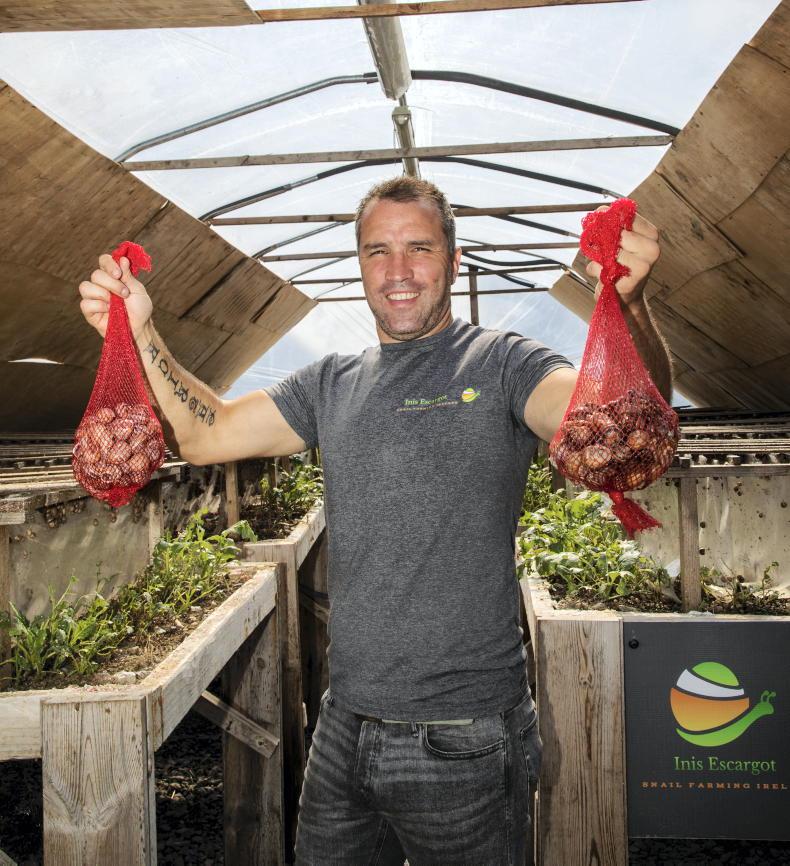
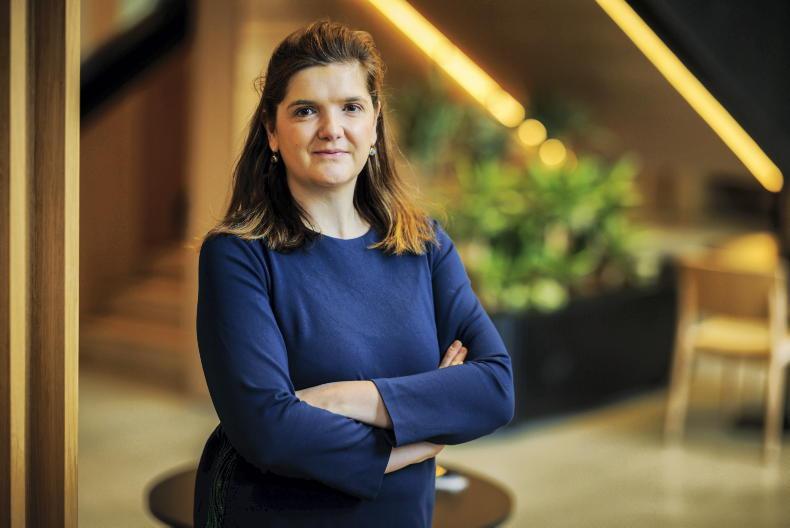
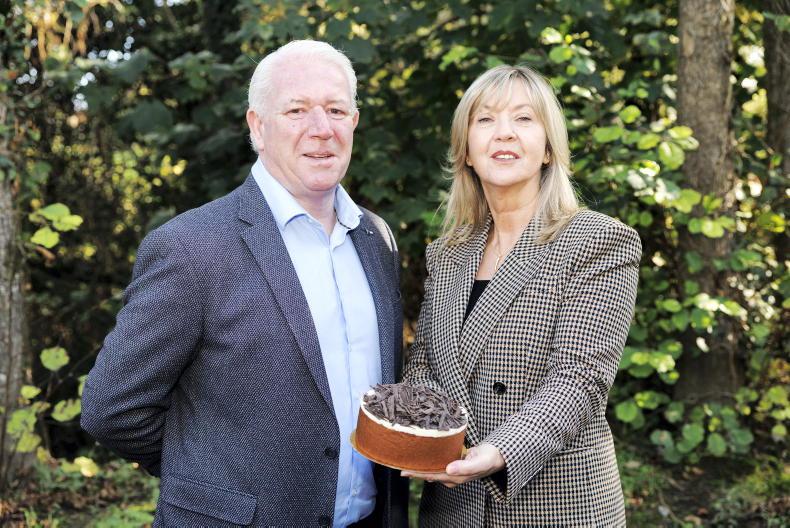


SHARING OPTIONS